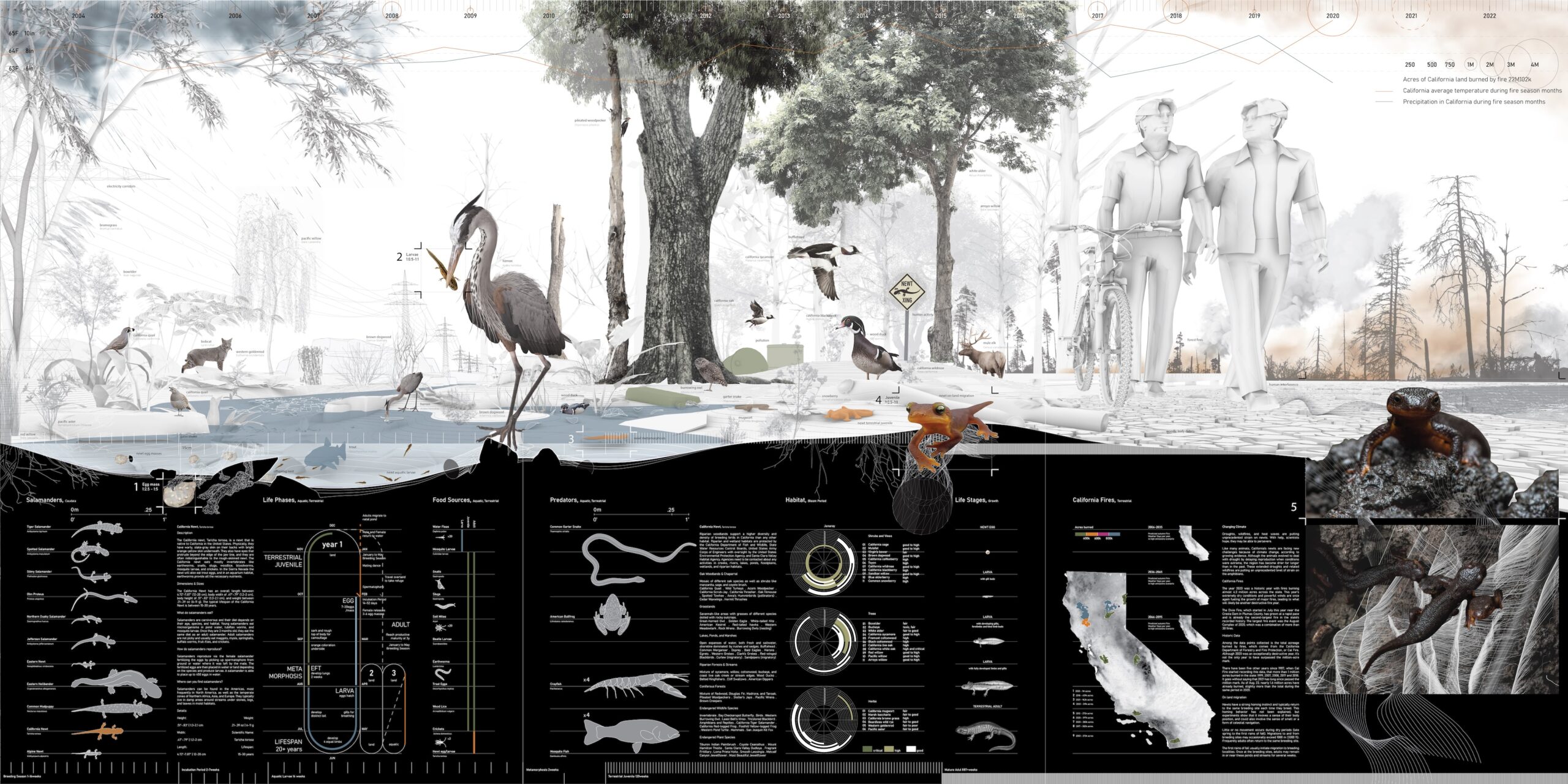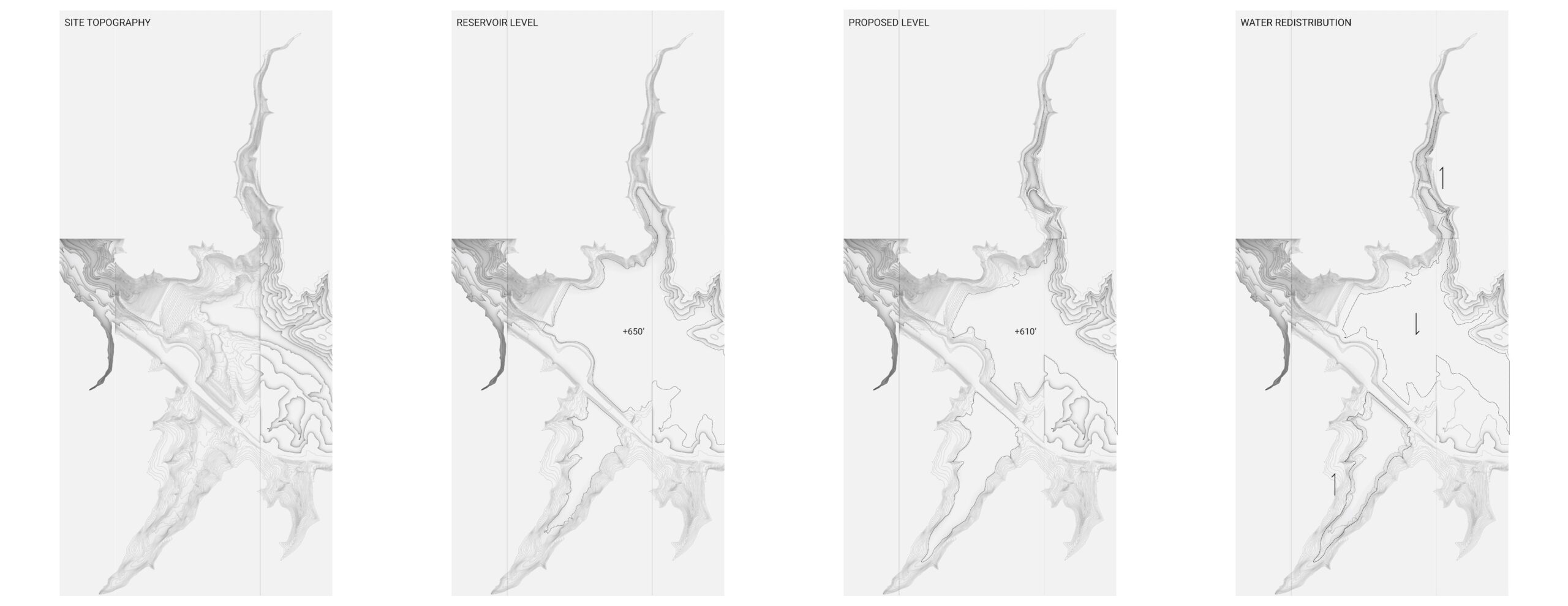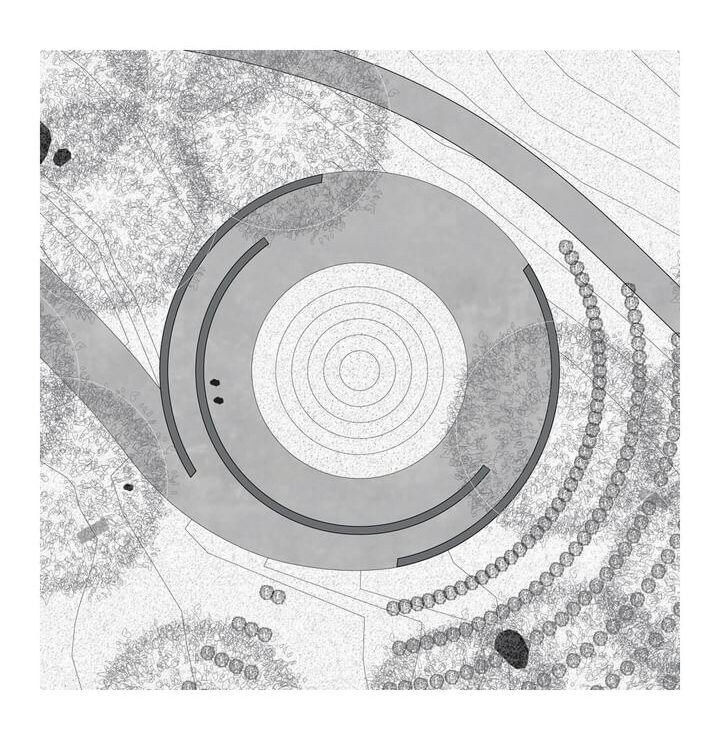The Newt Normal
WildWays, California Connectivity – exploring strategies for habitat and wildlife connectivity.
Species: California Newt (Taricha torosa)
Location: Lexington Reservoir, Santa Clara County, California
Newt populations are in decline across California, facing challenges from urban development, roadways, mountain bike trails, pesticide use, poor water quality, and prolonged periods of drought. The California Newt has a limited range, with remnant pockets of populations threatened today by habitat fragmentation. With their bright red color used to signal toxicity, the Newt faces few predators aside from the garter snake, with which it’s engaged in an evolutionary toxic arms race. Newts must migrate seasonally between dry upland habitats and water bodies where they breed. Often, these habitat patches are separated by roads, leading to significant road mortality during mass migrations.
A recent survey by community scientists, known as The Newt Patrol, revealed that 39.2% of adult Newts at Lexington Reservoir fail to complete the round-trip migration. Without intervention, the local Newt population is projected to decline to fewer than 1,000 adults within 15 years and may face extirpation in 57 years. However, reducing road-based mortality to 20% could allow the population to grow to over 4,700 individuals within 100 years. A further reduction to 17.6% would stabilize the population at its current size.
This design proposal addresses road mortality by focusing on the creation of new breeding habitats in upstream areas, such as Limekiln and Trout Creeks. The strategy includes seasonally lowering water levels in the reservoir to expand the littoral zone, encouraging a more productive and natural environment. Through landforming and strategically placing weirs, water retention in upstream areas is enhanced. Additionally, floating treatment wetlands are proposed to improve water quality and provide diverse, safe habitats. These measures aim to support coexistence between humans and wildlife while ensuring the long-term survival of the California Newt population.
Author: Christopher Lucas Dobbin
Advisors: Chris Reed (Harvard Graduate School of Design), Nina-Marie Lister (Toronto Metropolitan University)
Special Thanks: Beth Pratt-Bergstrom (California Director for the National Wildlife Federation), and ARC Solutions
Author Instagram














